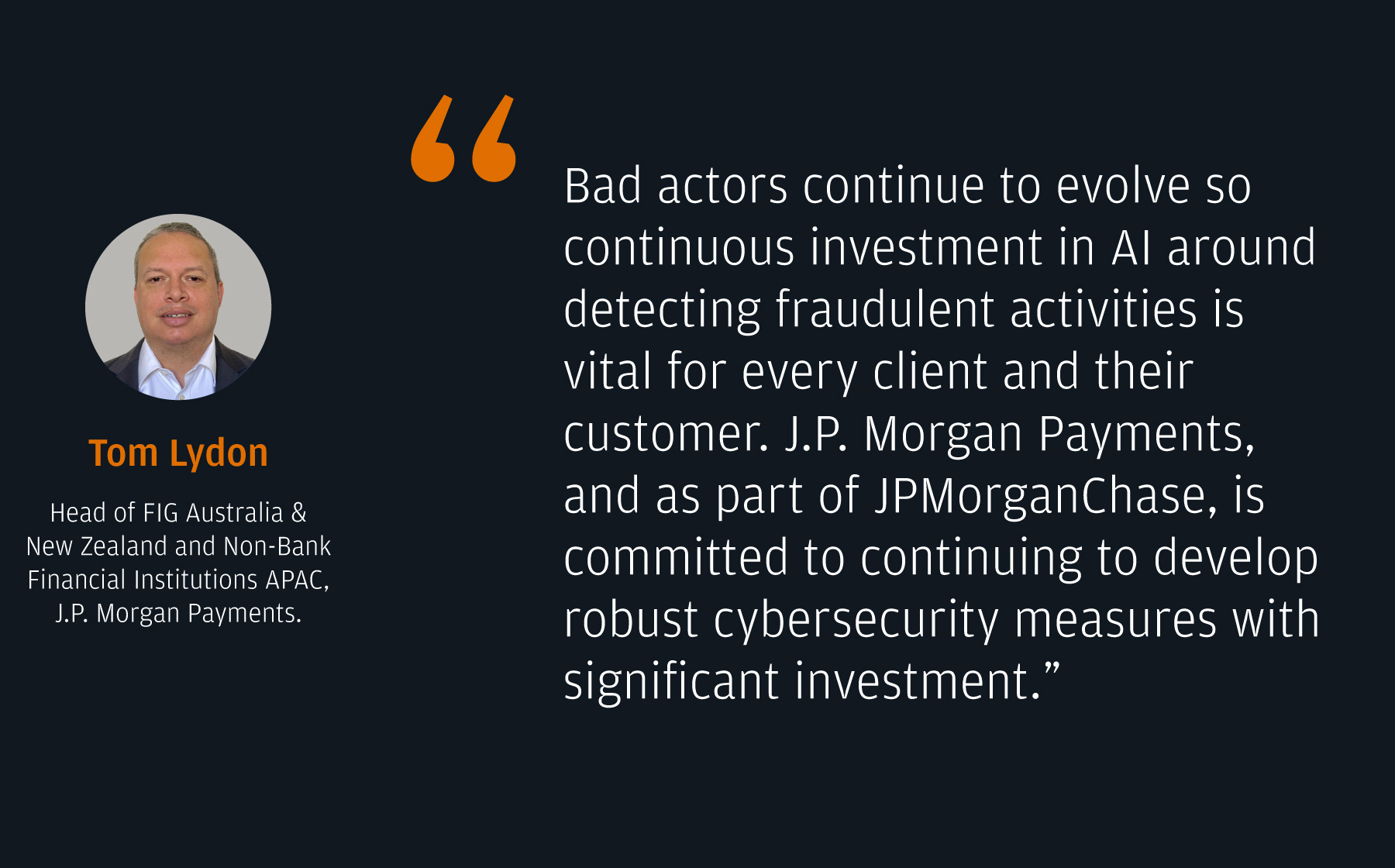Treasury at Scale: Empowering Asset Gatherers with Next-Gen Tech
As institutional investors look to equip their treasury departments with the tools they need to adapt to a changing business environment, partners like J.P. Morgan Payments are providing cutting-edge technological innovation.
Today’s corporate treasury is much more than a cash and liquidity management function. Globalisation, mounting operational risks and sustainability considerations have transformed the treasury department into a strategic nerve center with technology requirements to match.
This change is nowhere more evident than in the treasuries of institutional investors. In their role as asset gatherers and asset managers—serving a range of clients, including pension funds, sovereign wealth funds and other sector-specific funds—they must contend with the complexities arising from working with multiple industries, markets, asset classes, currencies and regulatory environments.
“The corporate treasury function is undergoing a significant transformation, evolving to take on a strategic role, particularly at asset-gatherers,” says Tom Lydon, Head of FIG Australia & New Zealand and Non-Bank Financial Institutions APAC, J.P. Morgan Payments.
“Treasurers are leveraging digital technologies to enhance efficiency, improve decision-making and drive innovation, and J.P. Morgan Payments is at the forefront of bringing them those technologies.”
Winds of Change
The evolution of the treasury is being driven first and foremost by the global nature of today’s business and capital markets landscape as institutional asset gatherers follow their clients’ expanding footprint across borders. From a corporate treasurer’s perspective, this means managing and mitigating risks, especially by implementing hedging strategies to address the impact of currency volatility and interest rate fluctuations on cash flow and profitability.
Optimizing the liquidity needed to sustain global operations means obtaining real-time visibility of cash positions across multiple funds, accounts and regions while complying with a vast array of regulations—a complex and resource-intensive task for institutions spanning markets and asset classes. Additionally, treasury managers must often ensure the company’s financial goals are aligned with its environmental, sustainability and governance (ESG) objectives.

Speed, however, brings risk. A significant uptick in payments fraud[1] amid growing demands for faster transactions makes security and fraud prevention central to the rapidly changing corporate treasury. “For us, the approach to security and fraud prevention is an increasingly crucial aspect of the digital treasury landscape,” says Lydon. “I can't stress enough the importance we place on that.”
The Growing Treasury Tech Stack
Security concerns notwithstanding, today’s asset gatherers—whether they are managing pension funds, private credit portfolios or sovereign wealth assets—demand secure USD payments, real-time visibility over funds and transactions that are cost-effective at scale.
Institutions like J.P. Morgan Payments are responding to these expectations, and the accompanying challenges, with a range of digital technologies, including artificial intelligence (AI), generative AI (gen-AI), machine learning (ML), application programming interfaces (APIs) and blockchain.
Besides helping to automate routine tasks, tools powered by AI and ML also enhance the predictive analytics capabilities of treasurers, helping them make informed decisions. Other use cases include screening to ensure companies avoid interactions with entities subject to sanctions—a growing challenge in a difficult geopolitical environment—[2][3] and fraud prevention.
J.P. Morgan Payments, which processes more than $10 trillion in global payments every day across 160 countries and 120 currencies,[4] uses AI and ML technology to detect bad actors, and anticipate and prevent fraud by verifying accounts, businesses and documents, including with the use of advanced tools such as multifactor authentication and biometric verification, to enhance the treasury’s cybersecurity capabilities.

Yet another key advantage of AI is scalability. This is crucial to asset gatherers and asset managers operating in challenging markets, dealing with complex assets, or in need of flexibility and funds at exactly the right moment to buy or sell those assets. “One of our value propositions, given the size of our platform and the breadth of different currencies and markets we support, either intra-Asia or globally, is about providing scalable solutions that can grow with the business and adapting to changing needs,” Lydon says.
While AI, gen-AI and ML enhance capabilities and efficiencies across the board, APIs enable the seamless flow of transaction data between treasury management and enterprise resource systems to improve real-time visibility into cashflows and sharpen forecasting capabilities. API plug-ins such as those offered by J.P. Morgan Payments are easy to implement and integrate into most major systems.[5] This means treasurers can view and manage cash positions across multiple banks without relying on spreadsheets or manual data entry.

Even as treasurers work to understand and adopt this range of tech tools, a fresh tide of innovation is coming in with the ability to further alter the corporate treasury landscape, says Lydon.
One is the ongoing evolution of open banking, which, supported by the rapid growth and adoption of APIs and new regulations,[7] can transform the treasury customer experience by fostering collaboration between banks and fintechs to drive innovation and change how treasurers interact with their financial partners.[8]
Then there are central bank digital currencies (CBDCs), a technology that is being tested around the world[9] and expected to make a multi-currency, cross-border, real-time payments network a reality and save global corporations nearly $100 billion annually.[10]
Ultimately, as the needs of treasurers change and technologies emerge to address them, institutions like J.P. Morgan are evolving to help clients navigate local and day-to-day complexities and realize their global and long-term ambitions with value-add solutions.
As Lydon notes: “J.P. Morgan Payments is continuously innovating to support our clients in this space. Why? Because providing our clients with a platform that offers instant payments, transparently and in a cost-efficient manner is where our value is.”
